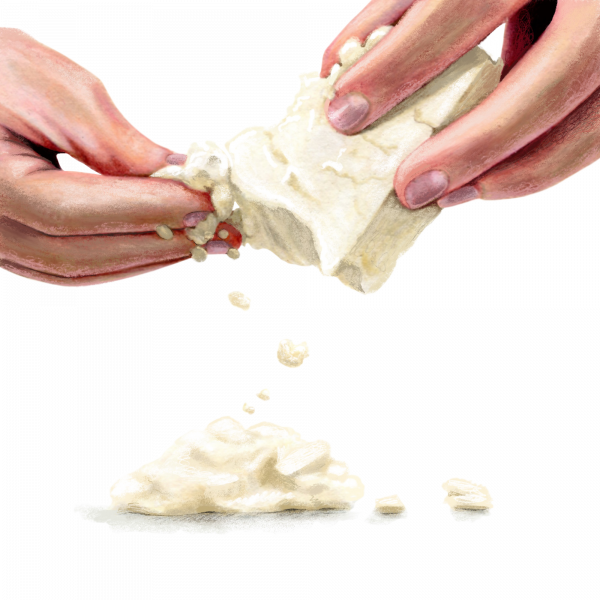
Many feta cheese brands in the U.S. come precrumbled, but at Milk Street we sacrifice the convenience and buy it by the block. That’s because crumbled feta loses moisture, resulting in cheese that’s overwhelmingly salty, so much so that it overpowers the cheese’s more nuanced flavors. Crumbled feta is also exposed to more air (because it has more surface area), which can cause the fat to oxidize and produce off flavors. For the best feta, search out blocks stored in brine. When ready to use it, cut off a slice, rinse under cold water, pat dry and break the cheese apart with your fingers or a fork.
Looking for a one-stroke solution to flavoring and cooking shrimp perfectly, we turned to the seaside tavernas of Greece, where appetizers known as saganaki are prepared in a two-handled copper pan called a sagani.
In garides (shrimp) saganaki, shrimp are cooked in a mix of onions, tomatoes and ouzo, an anise-flavored liquor, all of which cooks down into a rich sauce. The shrimp are then topped with feta and broiled.
For our version, we seared the shrimp briefly on one side, stirred them, then set them aside. We used the same skillet to create a flavorful tomato sauce seasoned with classic—and potent—ingredients, including Kalamata olives, red pepper flakes, garlic and fennel seeds.
Once the sauce reduced, concentrating those flavors, we pulled the pan from the heat, stirred in the shrimp, then covered the pan and let them gently finish cooking in the residual heat of the sauce, all but eliminating any chance of overcooking.
We skipped the broiling step, opting instead to simply top the dish with feta for briny-creamy notes, as well as chopped raw tomatoes and fresh oregano for contrast.
Related Recipes
May-June 2018

Sign up to receive texts
Successfully signed up to receive texts!
We'll only send our very best offers - Like a $15 store credit to start.
By entering your phone number and submitting this form, you consent to receive marketing text messages (such as promotion codes and cart reminders) from Christopher Kimball's Milk Street at the number provided, including messages sent by autodialer. Consent is not a condition of any purchase. Message and data rates may apply. Message frequency varies. You can unsubscribe at any time by replying STOP or clicking the unsubscribe link (where available) in one of our messages. View our Privacy Policy and Terms of Service.



